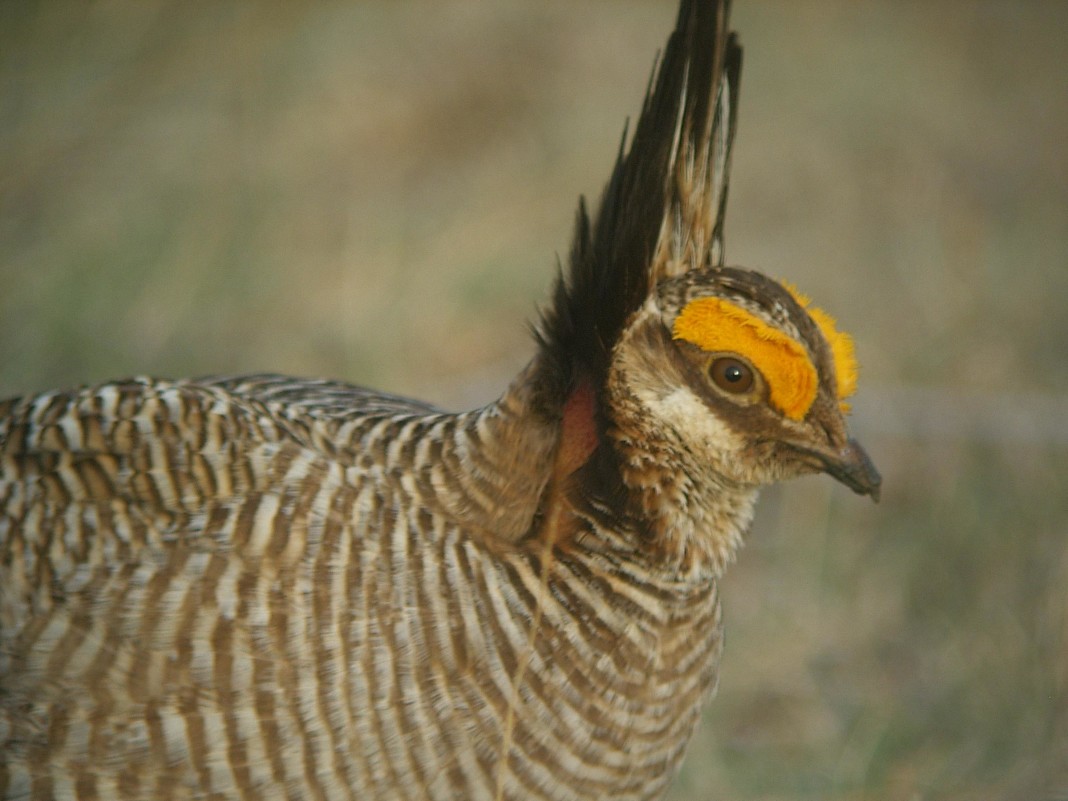The lesser prairie-chicken, like other species caught listed as threatened, continues to face an uphill battle amid human and industrial encroachment on its native habitat.
However, with the right mix of conservation-based initiatives and research, the once prolific bird may soon find itself thriving.
The U.S. Fish and Wildlife Service listed the species as threatened under the Endangered Species Act in 2014 and related efforts to grow the population have received widespread support, including from Texas landowners. The lesser prairie-chicken’s historical range of grassland and prairie has been slashed by roughly 80 percent, according to Service estimates. That territory including in portions of Texas, Colorado, Kansas, New Mexico and Oklahoma now only harbors a little more than 17,000 of the birds in the most recent count, a figure the Service hopes to grow by 50,000 over 10 years with a multi-tiered plan that includes brush control, grazing management, prescribed burning and allowing periodic monitoring, according to the Texas Parks & Wildlife Department.
Nearly 100 landowners in the Panhandle and Rolling Plains voluntarily have enrolled hundreds of thousands of acres in conservation agreements, marking one of the largest private commitments to conserve a species in state history. The effort has been long in the works, getting its start in 2006 when TPWD signed a Candidate Conservation Agreement with Assurances with the Service. At that time, the prairie-chicken was only a candidate for a threatened or possibly endangered listing. When the Service proposed listing the bird as threatened in 2012, enrollment in the program surged.
Lesser prairie-chicken conservation plan includes Texas landowners
Aerial surveys for lesser prairie-chickens will begin next week and run through mid-May in Texas and four other states containing habitat on which the bird needs to thrive. The surveys are conducted annually by the Western Association of Fish and Wildlife Agencies in accordance with the Lesser Prairie-Chicken Range-wide Conservation Plan.
The plan is a collaborative effort of the association and the state wildlife agencies of Texas, New Mexico, Oklahoma, Kansas and Colorado. It was developed to ensure conservation of the lesser prairie-chicken with voluntary cooperation of landowners and industry. This plan allows agriculture producers and industry to continue operations while reducing impacts to the bird and its grassland habitat.
The surveys will be conducted by helicopter in locations chosen randomly within prairie-chicken range. Last year’s surveys brought good news: an abundance of spring rainfall in 2015, along with ongoing efforts associated with the range-wide plan and other conservation initiatives, helped increase the lesser prairie-chicken population by approximately 25 percent from 2014 to 2015.
Lesser prairie-chicken populations have fluctuated historically due to weather and habitat conditions. In fact, populations were so low during the droughts in the 1930s and 1950s biologists feared the species was almost extinct. However, when rains returned, the populations rebounded, according to TPWD records.






















